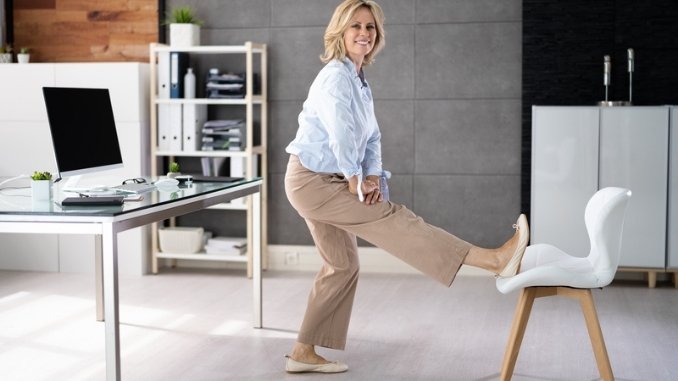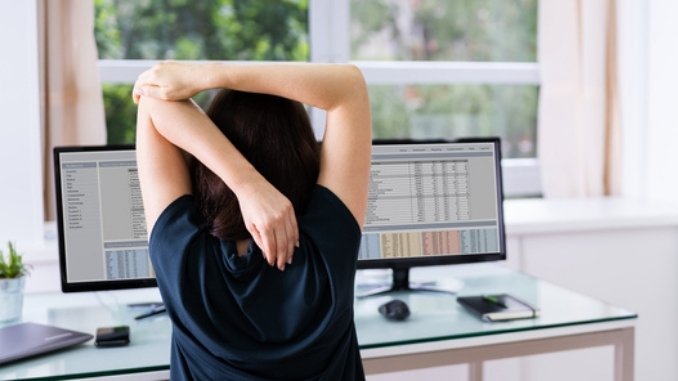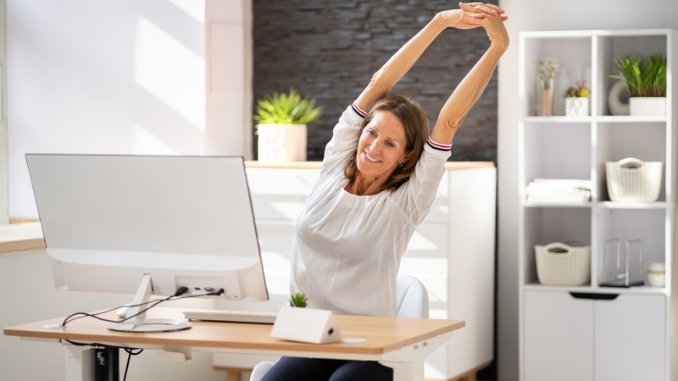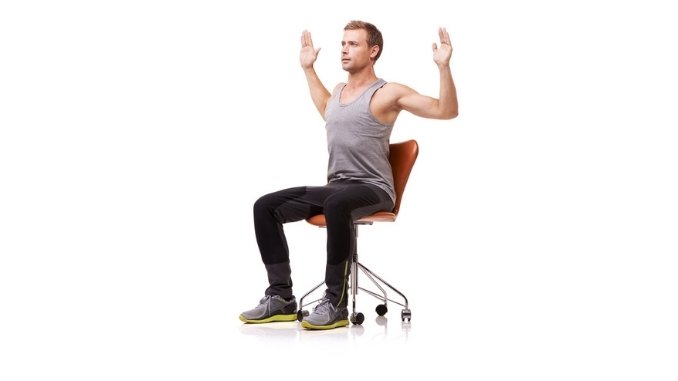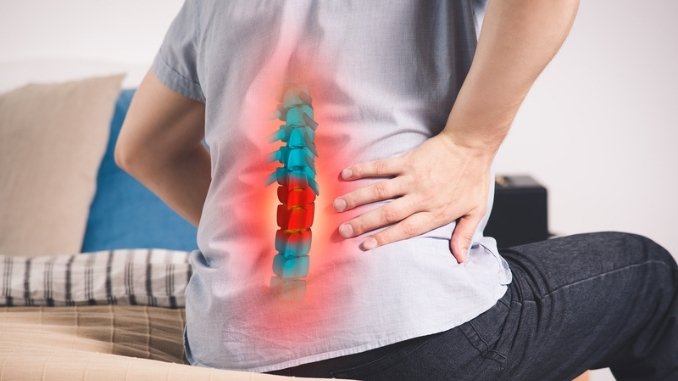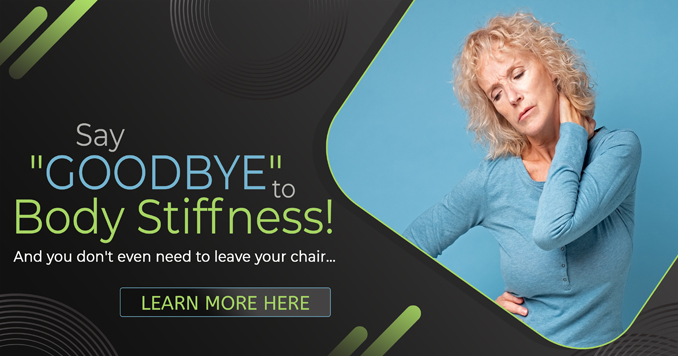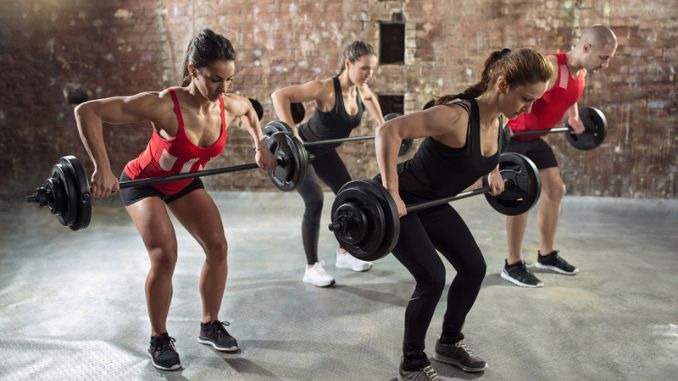Did you know that sitting for long periods can severely harm your health?
Prolonged periods of sitting cause the blood to pool in your legs and reduce blood circulation. This results in serious health problems like Pulmonary embolisms, a blockage of your lung arteries caused by a blood clot from your legs.
Sitting for long hours increases your risk of chronic health problems like heart disease, diabetes, obesity, metabolic diseases, and cancers.
If you work in an office, chances are you spend most of your day at a desk. Sitting for extended periods is not healthy and can lead to some problems.
Gain great health benefits
1. Stretching at your Desk is Easy!
One of the best ways to reverse the negative effects of sitting is to incorporate stretching into your daily routine, like doing simple stretches while at your desk. This can improve your posture and reduce muscle tension and feelings of stiffness. You can also do these quick desk stretches in-between breaks or on your way to work. That way, you’re warmed up and ready for a more focused and productive day when you get to your desk.
Side Stretch
A side stretch can help you relax your shoulders and reduce any tension in that area. It is a quick and easy way to refresh your body.
To do this: Sit on your chair. Raise both arms above your head, and interlace your fingers. Slightly bend towards your shoulder. Hold this position for 10 to 30 seconds. Repeat this stretch twice.
2. Front Neck Stretch
A front neck stretch is a great way to release any tension building up around your neck. This stretch targets the trapezius muscle, which runs from your shoulders to the top of your spine, helping to reduce tension and stress and improving posture by relaxing these muscles.
To do this: Place your hands at the back of your head. Close your eyes to feel more relaxed. Push your head against your palms and hold the position for a few seconds. Relax and repeat the movement for as long as you need.
3. Spinal Twists
A spinal twist is a type of physical exercise that helps to stretch and strengthen the back muscles. This exercise is often used to help relieve back pain.
Maintaining the length and flexibility of the spinal muscles and joints is one way to help maintain spinal health. Spinal twists can offer comfort and pain relief by preserving mobility and strength of the joint and muscles and disc health.
To do this: Sit up straight on a chair and twist your upper body to one side while holding the back of the chair for support. Hold this position for a few seconds and repeat the movement on the opposite side.
4. Cat-Cow
The cat-cow pose boosts the flexibility of the neck, shoulders, and spinal muscles. It also stretches the hips, back, stomach, and chest muscles. By strengthening your spinal column, you strengthen your back and neck muscles. This stretch will activate the tailbone and release neck and upper back tension.
To do this: (You can also move in a seated position, ensuring your feet are flat on the floor). On the floor, begin with your hands beneath your shoulders and your knees under your hips. Slowly lift your head and arch your mid back. Then alternate by rounding out your mid-back as you drop your head downward. Repeat the movement, alternating directions.
5. Chest Stretch
The open-arm chest stretch loosens the chest muscles, improves blood circulation, and prevents neck and back pain. In addition to improving posture and increasing flexibility, this stretch opens up the chest and aligns the shoulder blades.
To do this: On your chair, with your feet flat on the floor, raise your arms at shoulder height, palms facing forward. Hold this position for 10 to 30 seconds and take several deep breaths.
Disadvantages of Sitting for Long Hours
There are quite some disadvantages of sitting for long hours.
- When you sit for long hours, blood pools in the leg veins, increasing pressure in the veins. This can cause the veins to stretch and weaken the valves. As a result, blood may leak out of the damaged veins and into the leg muscles. This can lead to varicose veins.
- Sitting for long hours and not doing quick desk stretches can cause digestive problems. Your body releases cortisol, increasing fat storage and blood sugar problems.
- Prolonged sitting can impede blood flow to lower limbs, resulting in cramps, reduced flexibility, and even blood clots. These blood clots can be dangerous as they can travel in the system as an embolus and cause an embolism.
- Prolonged sitting can also cause the psoas to get tight, causing structural problems as it constricts the organs, puts pressure on nerves, interferes with the movement of fluids, and impairs diaphragmatic breathing. It can affect how well we digest food, the comfort of our menstrual cycle, and how well we eliminate and remove waste from the body.
- In addition, when the psoas is very tight, it can pull the sacrum out of place, causing a possible dysfunction of the ileocecal valve. Dysfunction of the ileocecal valve can trigger small intestinal bacterial overgrowth (SIBO) by allowing the content of the large intestine to backflow into the small intestine, causing a huge increase in the number of bacteria in the small intestine.
- Long periods of sitting can also significantly cause low back pain. It can weaken your glute muscles and cause your hips to tilt forward, leading to lower back pain. When you sit, your muscles are inactive, so they go into a resting state. When your body is inactive, blood flow slows down, making your muscles less able to receive the nutrients they need causing pain and stiffness.
- Sitting for many hours at your desk causes the muscles and ligaments to become tight and weak. This may also result in poor posture. That’s why quick desk stretches are important.
- Suppose you are sitting in an unnatural or uncomfortable position. In that case, it can add extra force to your spine that causes a herniated disk — a spinal nerve pinched by a bulging, outwardly pressing disk in the vertebral column that can affect any vertebral disk. Long periods of sitting are not intrinsically harmful to your spine.
In summary, sitting for extended periods is unhealthy as it can lead to several problems. You can counteract these effects by doing quick desk stretches every hour or so. You can also do these stretches before starting your day to ensure you are ready to be more focused and productive.
Don’t live a sedentary lifestyle. Make sitting a healthy experience. Move and stretch!

Rick Kaselj MS, is a leading kinesiologist and injury specialist as well as co-creator of the best-selling Unlock Your Hip Flexors program. Rick creates exercise programs that help people heal injuries and eliminate pain, so they can go back to living a full, active, healthy life.

